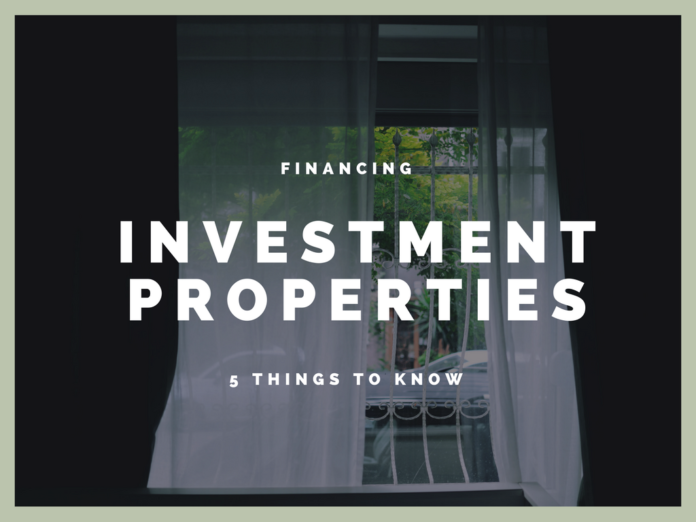Financing for investment properties is quite a bit different than when comparing loan options, rates and guidelines to that of purchasing your own home.
Obviously, there is more risk that a lender takes on when evaluating a borrower who is financing a property that is going to be used for investment purposes as opposed to buying a property that they will personally live in.
The rates and guidelines is always fluid based on lending criteria, borrower qualifications and market circumstances, but there are some principles to consider that remain fairly static as you get familiar with investment property financing.
- Select a product based on your goals. Similar to owner occupied financing, there are different products available and the rates will correspond to those products. There are fixed rates, adjustable rates and some hybrid products available as well. A hybrid product has some fixed and adjustable rates components. Your investment strategy will likely dictate which type of product is the most appropriate for you. If you plan on buying and holding for more than 10 years and rates are low, as they are today, then a fixed product may be the most suitable option. For those who are playing the market a bit and would prefer to either fix and flip, or sell within several years, there are certainly subject to more risk, but may also be more comfortable with an adjustable rate product as the rates are lower.
- Will you spend any time living in the property? There are borrowers who can qualify for an investment purchase yet with owner occupied or second home financing. For example, if the property is attached (2 unit or 4 unit attached properties), and the borrower plans on living in one of the units, then there are financing options available in which a loan is not a “non-owner occupied” product. There are also products available in which the borrower plans on spending some time at the property. These are second home or vacation home products. Each bank/underwriter has different criteria on what qualifies as a second home but it is likely that they will factor in the distance between your primary residence and the prospective second home property as part of the equation. While the rates are still typically higher and the guidelines more stringent, these products are still more favorable when compared the rates and guidelines of non-owner occupied products.
- Be familiar with conforming loan limits. The amount in which the borrower is financing is important based on whether or not the property qualifies as a conforming loan. These limits vary by city or county and are very important as a nonconforming loan, or a “jumbo” loan can drastically change the structure and borrower’s qualification guidelines for financing. This typically matters when financing high end products or even multi-unit properties and again, will vary based on the city/county and possibly the lender.
- Banker or Broker? This is always a tough one as there are pros and cons to both. With a bank, they fund the loan directly and have their own line in which to fund a real estate purchase. A broker typically shops the loan to various banks which is in theory good for the borrower as a good mortgage broker is keenly familiar with the borrower, the purchase and has access to different products through different lenders. Often times, it is important to have a trusted business relationship with one or both before making the decision as deals can explode, or a rate may be non-competitive (or both), when working with an unfamiliar or unqualified party.
- Know your fees. While regulatory provisions have helped clean up the industry, there are still fees that you may be presented with that are either excessive or somewhat hidden. If you are paying points for financing, you should know why. Some borrowers prefer to pay a point or two as that is used to “buy down” the interest rate on the loan. Some brokers offer a “no point” loan but the borrower ultimately pays the price in exchange for a higher interest rate. There is also a lesser known way to be subjected to excessive fees and that is in the form of “yield spread” on a loan. This is typically a result of an adjustable rate mortgage and the broker gets paid a percentage based on the yield/margin that the bank is going to make on the loan. All of this has to be disclosed in the GFE and/or the TIL documents, but it is good for the borrower to know what to look out for in advance of seeing these.
Financing can often make or break the deal before a real estate investor fields the first application from a tenant. Knowing your goals and the various financing options is a critical first step in the process and warrants some research in advance of considering the purchase of a new property. While this seems obvious, a recent survey by Zillow stated that 44% of mortgage borrowers did not fully understand the mortgage process when buying a home. It only gets more complex in the investment space so do your homework folks.




















